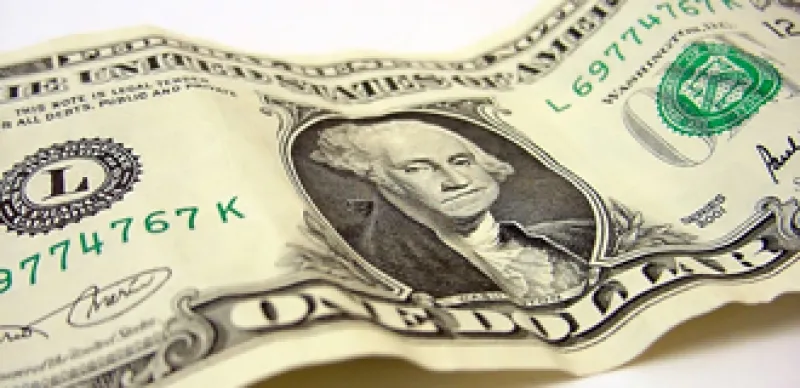Douglas Borthwick, a managing director for trading at Faros Trading LLC in Stamford, Conn. that executes foreign-exchange transactions for institutional investors, zones in on a question that everyone wants answered: Where is the U.S. dollar going, higher or lower? Borthwick argues lower, and here’s why.
Institutional Investor: How much influence do hedge funds have on the dollar’s movement?
Borthwick: Hedge funds are big players in foreign exchange but most of what’s happening in this arena is based on central bank intervention — and they’re all trying to weaken against the dollar so that their country’s exports are more competitive with China’s. They are artificially keeping their currencies weak and buying dollars.
What countries are most involved in dollar buying to weaken their currencies?
The largest buyer has been China, which buys a tremendous amount — $2.5 trillion in foreign currency reserves with 65 to 75 percent being dollars or dollar-based investments. Thailand, Korea, Taiwan and such emerging markets countries as Mexico and Brazil are buying dollars to make their exports more competitive with China’s. The United States doesn’t intervene in currency markets and so our dollar is stronger, which means that our exports are more expensive and less competitive — not a good situation for the U.S. economy.
China is continuing to be pressured to stop artificially keeping its currency, the RMB, cheaper, as we’ve seen coming out of the Federal Reserve Bank of Kansas City’s Economic Symposium meeting in Jackson Hole, Wyoming.
China is under pressure from the U.S. and from the European Union to speed up its timetable to revalue its currency. The PBOC, or People’s Bank of China, and SAFE, the State Administration for Foreign Exchange, are key players in keeping the RMB weak; China is taking its time. Presently, it is overweight the dollar and this makes for an anxious situation for the U.S. economy. China lately has been selling U.S. Treasuries and buying Japanese and European fixed-income securities — and plenty of South Korean bonds. This is in response to its fear of a weaker U.S. dollar going forward.
How does this play out in the U.S.?
Our exports continue to slow as the goods are more expensive with a strong dollar against weaker countries. But should the dollar be allowed to weaken as other currencies stop buying dollars to keep their currencies weak, then this of course will make our debt worth less — a weaker dollar helps us pay back our debt. The Federal Reserve Board and its chairman Ben Bernanke really have only two options: to raise taxes, which won’t happen when our jobs situation is what it is, or to devalue our way out of our troubles. And this is a long shot off as the Fed chairman is taking a slow response path.
Specifically, where would you like the dollar to be?
Borthwick: The dollar was trading at E1.50 in December 2009. If the dollar was trading at that same rate today, it would be 18 percent off and people would start seeing some improvement. Instead, right now it’s 15 percent more expensive and this has been especially good for German and French goods and the GDP growth of those countries.
There’s been lots of ink lately about the dollar becoming a funding currency — a sign of investors’ disenchantment in U.S. economic growth and return potential. What does this mean for the U.S.?
Funding currencies, until recently, has been a discussion about the Swiss franc and the Japanese yen. However, now, given that rates are excessively low in the U.S., the U.S. is falling into this category. Traders were able to borrow a half a percent from Japan — selling yen — and buy the Brazilian real and make 9-1/2 percent. The idea is that traders would sell the dollar and buy higher yielding currencies.
At Faros, we are expecting to see the dollar weaken as we expect to see continued pressure on China to float its currency so that the RMB isn’t artificially low. At the same time, excessive low yields for some time to come in the U.S. doesn’t bode well.
So then, it would be accurate to say that you don’t think Fed Chairman Bernanke is doing enough.
With Quantitative Easing 2, we expect the Fed to put more dollars in circulation thus bringing on dollar weakness. Inflation is a secondary worry when an economy is stagnant or not growing, like ours, and jobs and housing are looking exceedingly bleak. Japan used quantitative easing throughout the past ten years and has not created an inflationary environment. The Fed is behind the curve — we need action to deal with the recovery in terms of jobs and housing.
The Fed has a well-defined mandate as posited in these three tenets: maximum employment, stable prices, and moderate long-term interest rates. It is failing in all of them.
What about the administration and Congress in terms of stimulus programs to create jobs — has that been circumvented?
It may have slowed the downward move but not halted it. There have been unintended consequences in parts of the policymakers’ program of 2008-2009 to create jobs. For example, with alternative energy, we bought wind turbines — from overseas, which created jobs overseas, not here, and the same thing with solar panels, which are made in China and South Korea. So the stimulus money hasn’t helped our economy to create jobs — it created jobs overseas.
Janice Fioravante is a financial writer whose work has appeared in the New York Times and the Harvard Business Review.






